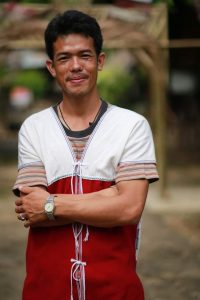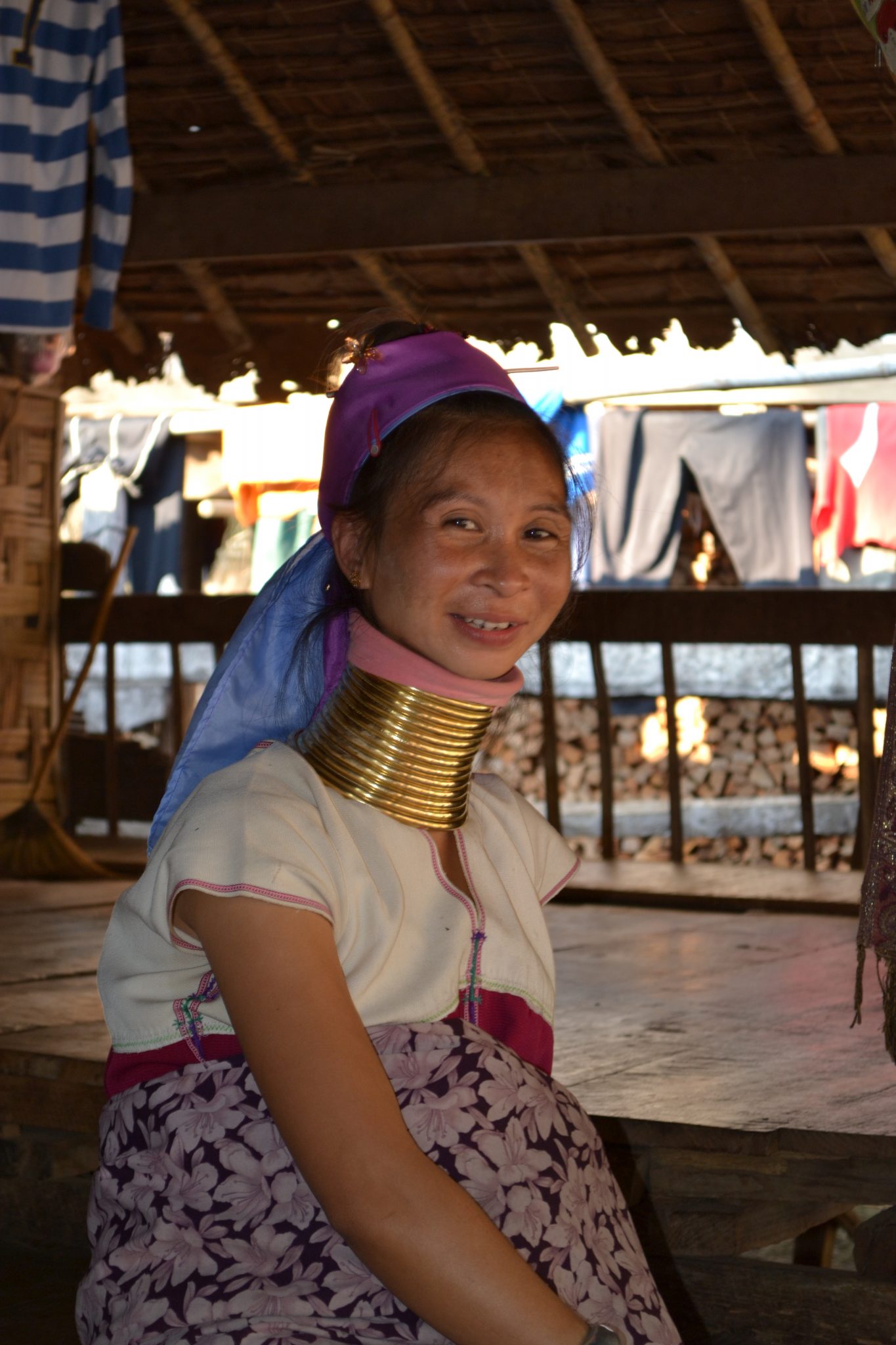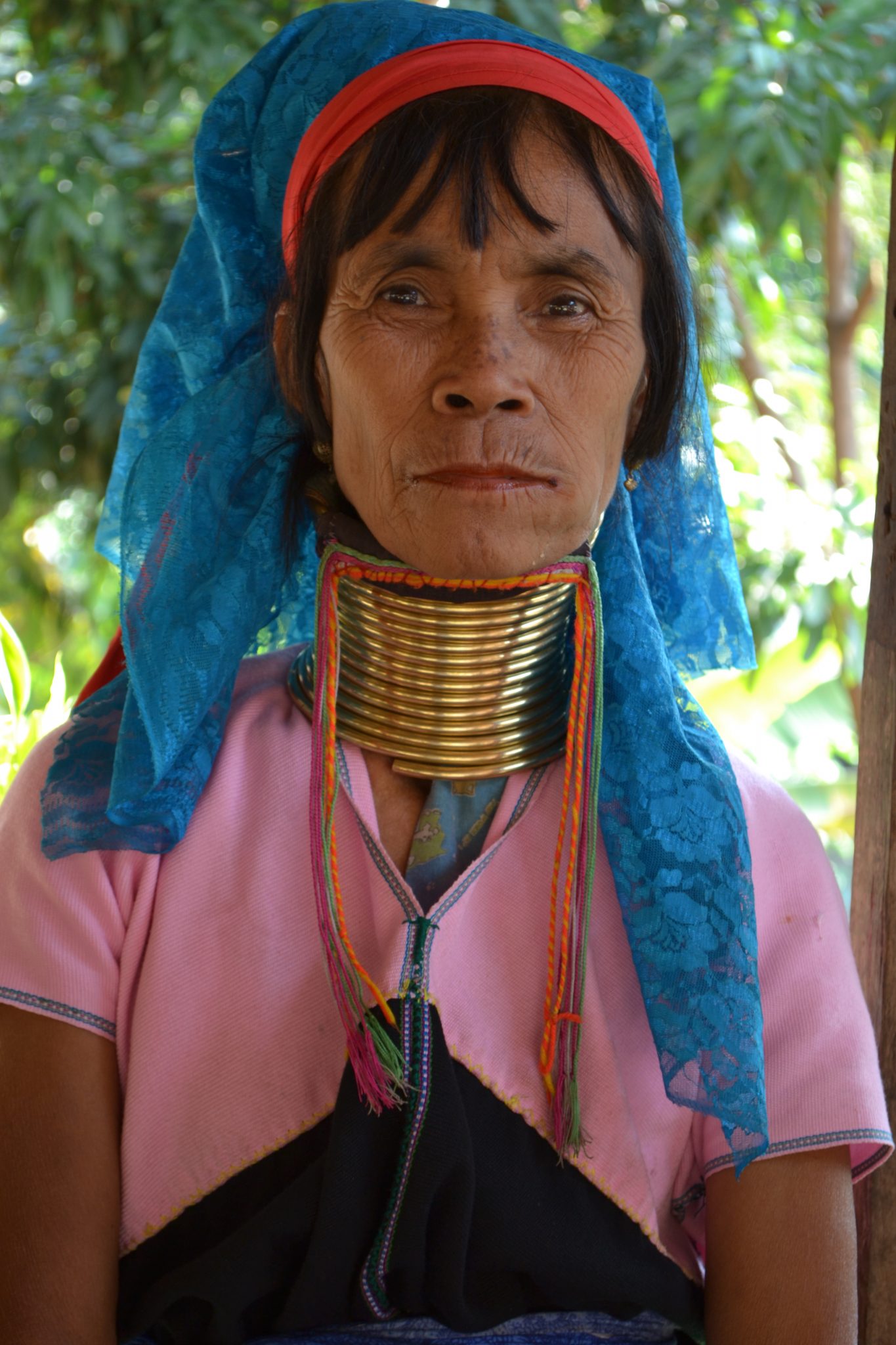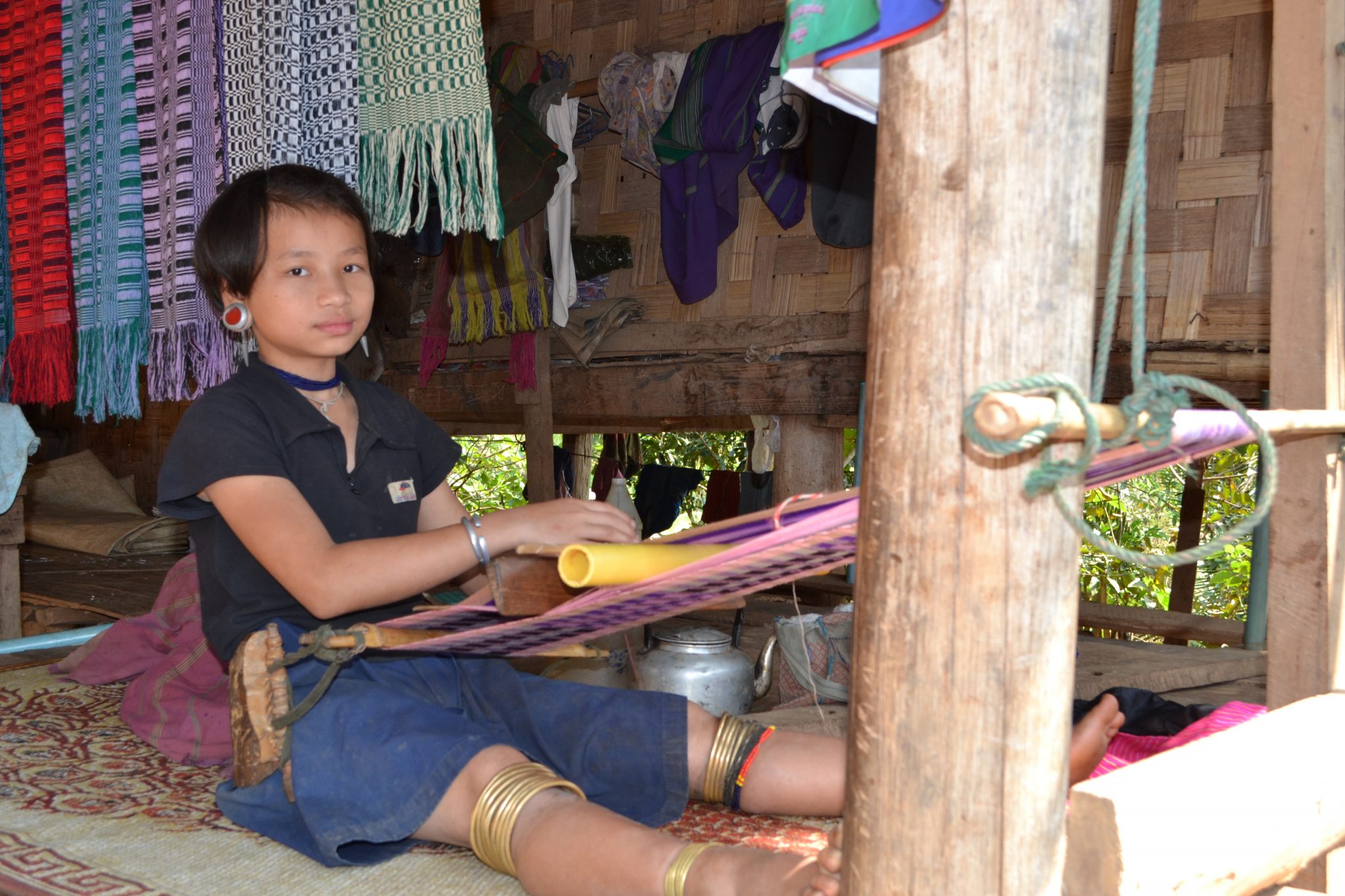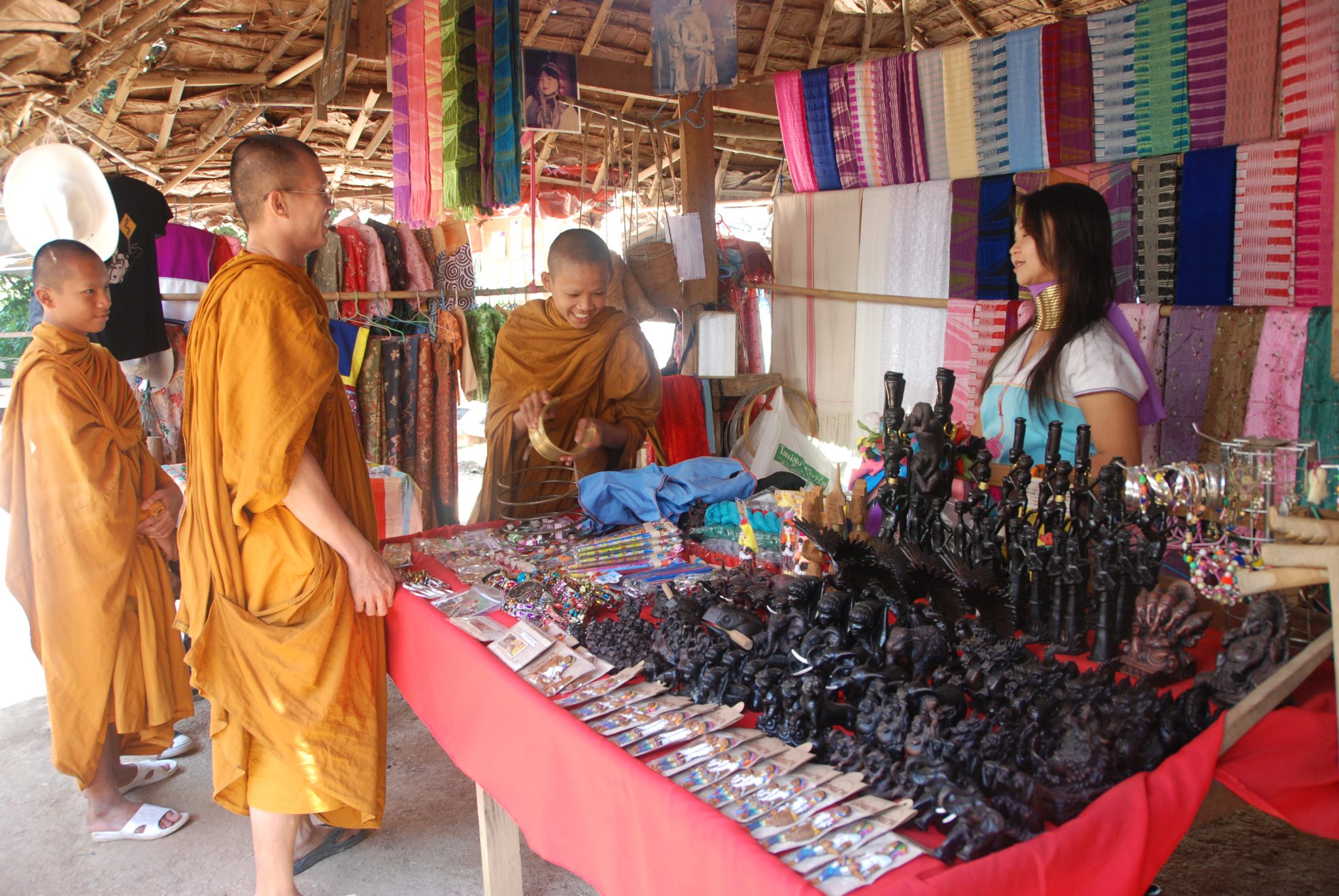We believe in tourism that relies on sustainability, cultural diversities, and respect for each other. We are keen on making travelers enthusiastic about visiting natural & cultural wonders, while engaging with the locals at the same time. This way tourism can be a catalyst for poverty alleviation & nature protection, while travelers have the best time of their lives! What are you waiting for? Take a look at our website and get involved!
Since the independence of the country of Myanmar from the United Kingdom in 1948, many sub-ethnic groups living there fled to neighboring countries due to the political tensions present at that time in the country. A large part of the Kayan, originally from Myanmar who are known for their traditional brass rings around their necks, settled in Northern Thailand. There, the Thai government considered them as possible tourist attractions, hence as a profitable source, which mainly consisted in giving the opportunity to tourists to take pictures of them. As a consequence of this, human rights movements against this exploitation rose, and aimed at promoting a type of tourism which is based on sharing the values of the Kayan, their customs and traditions, shifting the type of tourism from a vertical to a more horizontal approach. This is known as Community-Based Tourism, or CBT for short. However, although now there is the possibility to develop and to assure more independence to the Kayan in Huay Pu Keng, the number of visitors is limited. A reason why not that many tourists go there could be explained by the lack of knowledge in the existence of Huay Pu Keng, which compared to the other ones, is a sustainable, fair and culturally aware village of Kayan. As a consequence of this lack of knowledge, the villagers do not earn enough profit to make a living. In addition, lies are also spread about the rings of the Kayan. One example is that the rings would supposedly serve as protection against tiger bites, which is not true! although now there is the possibility to develop and to assure more independence to the Kayan in Huay Pu Keng, the number of visitors is limited. Contents Community-Based Tourism, also simply referred to as CBT, is a more sustainable and culturally aware tourism industry. The tourism package also consists of involving the community in an interactive way between the tourists and the community, so that tourists have the opportunity to become culturally aware of their customs and traditions. These people are often part of a marginalized and poor population living in rural areas. In Huay Pu Keng, the community consists of Kayan, an ethnic group who escaped from Myanmar in the second half of the 20 th century and fled, in part, to Northern Thailand. Here there are two different communities, the most known show villages in which tourists come to only take pictures of the Kayan, while the second is the one that has been established in Huay Pu Keng, which adopts Community-Based Tourism. In this case, the village of Huay Pu Keng which is found in Northern Thailand, offers Community-Based Tourism which aims at protecting nature and in providing the community with an equal and fair treatment, by giving them an equitable income and keeping their dignity as human beings. Take a look at the leaflet below for a more concise explanation of what is being done in Huay Pu Keng and who Fair Tourism is The Community-Based Tourism team of Huay Pu Keng meets with the villagers every month to assess who wants to work in tourism and in what way. They discuss what is going well, what needs to change and if there are any new projects to include. This team for instance consists of representatives of the various workshops: If you would like to read more about Community-Based Tourism, here are some useful handbooks: Webinars on Community-Based Tourism: Charlotte Louwman-Vogels (Founder and director of Fair Tourism): “My dream would be that communities that feel oppressed and exploited by tourism, find Fair Tourism and contact us, so we can assess the situation with them and give tourism back to them, so tourism is no longer exploiting, but empowering them.” Our goal is to get more people to experience all the great things that Huay Pu Keng and its surroundings have to offer, because if the Community-Based Tourism model works well in Huay Pu Keng, then more hill tribe villages could implement it. That would mean that the residents of those villages no longer have to be exploited through tourism, but they can make a decent income centered around their skillset. What’s there to do? There are various workshops on offer in Huay Pu Keng. A local resident will show you how skillful they are in their craft and teach you how to do it. You will be creating something that is traditionally Kayan, in a traditional way. In the end, you can of course take your self-made product back home with you as a memory of the trip. Take a look at the leaflet below for more information about the various workshops that are available, the costs and how long they take. Meals are not provided during the workshops, but the residents are more than happy to prepare a traditional meal for you for only 100 baht (€2.80). “We have done a workshop making a bracelet during our visit to Huay Pu Keng. During this workshop you really connect to the people living there. They are open for contact and love to talk about their daily life. (…) After the workshop we had a delicious local lunch. For a real and local experience I really recommend one of the workshops!” – Jasmijn Grundel (former employee at Better Places) If you are interested in following one or multiple of these workshops, you can arrange this by contacting one of the local people, the information is at the bottom of the webpage. Otherwise you can contact one of the following tour operators: Better Places In Huay Pu Keng there is a sacred site where the Kayan celebrate their new year. The festivities last for three days and include a diverse range of activities. According to resident Pay Yu, the highlights are the “music and dance celebration, and sportive competitions, like football and volleyball. It’s based on animism, reflecting the World’s creation by their own god, through a pole planted in the soil. Every year, we erect a symbolic decorated stem and celebrate around it for luck and good health. There are more than 400,000 Kayan people in the world and during Poi Ton Tee, we all celebrate. Tourists are very welcome to join us.” Huay Pu Keng is located in the region of Mae Hong Son, which is rich in attractions ranging from natural to cultural interests. Here you will find a list of the most loved touristic sites, which vary from isolated to crowded locations, depending on your preferences. Jungle and river Pai : If you are looking for a very local and adventurous experience, accommodating in an isolated village with guest houses, you can hike in Chiang Mai and fish in Pai river. Due to its isolated location, it is a very authentic and unique experience, which can include for example hill tribe tracks Mae Hong Son loop : Would you like to drown into the Thai nature, but don’t have the physical ability to do so? You can rent a motorbike and discover the main natural characteristics of the area through the Mae Hong Son loop, which is a popular road in the region Tham Lot Cave : Are you a lover of caves, particularly of rocks? The Tham Lot Cave is the longest cave in Thailand, which consists in a mix of a romantic and wild experience Mae Sariang : Are you looking for a place to rest your mind, frequented mostly by backpackers? Mae Sariang is the perfect location, surrounded by an authentic experience which also includes the possibility to visit temples, hill tribes’ villages and many more. National and protected Parks : Namtok Mae Surin National Park is a loved park which includes caves, waterfalls, and mountains. While the Pang Tong Royal Development Project is a stunning protected park in which many hill tribes are living. There are also lakes and beautiful hikes that can be done. Mae Hong Son Burma style temples: While Thailand has plenty of temples, the Burma temples in Mae Hong Son are particularly authentic. Due to the close border with Burma, many temples have been built there in the past. Their most attractive characteristics are the enormous Buddha in each temple and their architectural structures. Buat Luk Khaeo Festival: This is the most colorful official celebration of the country, in which boys between 10 and 13 years old are ordained as novice monks. This colorful event occurs at the beginning of April, in conjunction with other celebrations such as Songkran and Buddhist New Year. Wat Phra That Doi Kong Mu: This is a perfect expedition if you love both nature and the Thai culture. After half an hour trek in a forest you will arrive at a temple introduced by two lion statues, with one of the most stunning views of Mae Hong Son. Visitors have to keep in mind that Huay Pu Keng is a village and that they are guests. Therefore, they should behave accordingly. Don’t throw your trash on the ground or enter someone’s house without permission. The residents are used to people visiting them and love to show you around and talk about their fascinating culture, but do not cross the line and start touching people or asking very rude, personal questions. Treat each other with respect and as human beings. Address: Huay Pu Keng, Pha Bong, Mueang Mae Hong Son District, Mae Hong Son 58000, Thailand. There are various ways to get to Huay Pu Keng, but we would like to recommend crossing the river Pai using a boat from the villagers. This costs 325 baht per person and includes the entrance fee. In addition, the money goes directly to the residents themselves, which supports CBT. This boat ride lasts for about an hour and it is a great opportunity to look at the jungle surrounding Huay Pu Keng. It’s a beautiful experience! There is a possibility to stay overnight in Huay Pu Keng in a homestay for 400 baht per night. There are around five homestays on offer and the residents built those themselves. There is also one little house which tourists can stay at alone that overlooks the river Pai. Food is not included, but it can be arranged. The residents love to let you experience their traditional dishes, so you only have to ask. The money earned from this goes straight into the village fund. For more information or in order to book, click here . If you would not like to book an accommodation in advance, you can always try to arrange it when you have arrived in Huay Pu Keng. However, there is no guarantee that you will be able to stay the night, because of the limited space. The little house in Huay Pu Keng which tourists can rent for themselves. It is no problem if you prefer not to stay in the village. About half an hour ride away is Changwat Mae Hong Son with a diverse range of accommodations. From local farms with a nice and cozy garden, to guest houses, hostels, camping’s, boat houses, hotels and luxurious resorts with swimming pools and buffets. Therefore, there is also a variety in prices from about 7-40 euros a night depending on the season and accommodation of choice. In Huay Pu Keng it is possible to try the local Kayan food for only 100 baht (€2.80), or to participate in a workshop to learn how to make some of the traditional dishes
Moung Pai (jewelry maker): “I want to explain more about Kayan history, that originated in the Gobi Desert in Mongolia. Also, I would like tourists to know the real story behind wearing the rings and it’s not protecting from tigerbites!” Myo Khin Mu Khloe (musician): “I love playing guitar. Tourists are welcome to come see me playing guitar. If they want, they can also try it. Aye Muang: Mobile no: +66 93 191 2920 (poster) or +66 85 706 0537 Pay Yu (with his child) Mobile: +66-93 305 6708 Follow us on Facebook and Instagram for regular updates Fair Tourism: Huay Pu Keng:
The COVID-19 pandemic has kept the world on tenterhooks for almost two years now. On March 11, 2020, the World Health Organization ([WHO], 2020) declared the coronavirus disease as a global pandemic. This pandemic has not left the tourism industry unscathed; as the World Tourism Organization stated ([UNWTO], 2021a), “global tourism suffered its worst year on record in 2020”. According to Trupp and Dolezal (2020, p. 3), developing countries in southeast Asia that are heavily dependent on tourism and where alternative ways of financing livelihood are limited, were hit the hardest by the COVID-19 pandemic. Thailand has been hit particularly hard by the pandemic due to its geographical location, position as a tourism hub, and dependency on Chinese tourists, as well as pre-existing economic vulnerabilities. The challenges brought about by the pandemic influence the short- as well as long-term perspective of tourism actors. In the short term, the main goal is to remain liquid; in the long run, high uncertainty about the future of tourism is the main challenge. One of the major uncertainties is the tourist’s post-pandemic behaviour, which demands a great degree of flexibility from tourism actors (Almeida & Silva 2020, pp. 442–443). The ability to adapt to the current situation will determine, in the sense of survival of the fittest, which tourism players survive the pandemic. Therefore, it is more important than ever for tourism actors, especially those with few alternatives to tourism, such as communities in rural areas, to analysis and implement the requested adjustments. This article is a short summary of the bachelor thesis aiming to answer the following research questions: Hence, on the one hand, the focus laid on the analysis of the adjustments done by the communities and their supporting entities in response to the COVID-19 pandemic. On the other hand, it investigated to what extent the crisis has an impact on the future of community-based tourism projects in northern Thailand. The collection of information is centered on qualitative research. The theoretical aspects gathered in a literature review were combined with an empirical investigation in the form of semi-structured, open-ended expert interviews. The study aimed to assess the impact of the COVID-19 pandemic on the future existence of CBT projects in northern Thailand (first research question) Therefore, the research aimed to highlight the most important factors of CBT that would ensure a stable future for the communities . The Pacific Asia Travel Association (2021) reported a decrease of around 83.2% in the number of international visitors to Thailand in 2020 compared to the previous year, plunging the country’s entire tourism industry into crisis. Besides, also several experts interviewed in the framework of the IBT emphasized that the COVID-19 pandemic did not leave CBT communities unscathed. However, the study found that the impact on the CBT communities, in particular, was not substantial, especially from a financial point of view. Although the COVID-19 pandemic has led to an overall reduction of income for many CBT communities in northern Thailand, the vast majority did not require any financial support. Even on a social level, the interviewed experts stated that members of CBT communities were not affected any more than other people across Thailand who also had to isolate themselves. Indeed, many communities living in remote regions had even more freedom during the COVID-19 pandemic than people living in larger cities. The reason for the comparatively small impact of COVID-19 on the finances of CBT communities is rooted in its concept. The most important factor in this regard, confirmed by all eight experts, is that tourism provides a secondary income for most of the CBT communities. Thus, the majority of communities in northern Thailand are not substantially dependent on tourism. Another factor that proved its importance in terms of the financial stability of CBT communities during COVID-19 was the CBT fund. This fund is owned by the community, representing 5–10% of their total income, and is serves as financial assurance. Three experts mentioned this as a crucial point regarding the financial independence of the communities and the preparedness for changes in tourism demand. Tourism as a secondary income and the CBT fund is of utmost importance. therefore, Nevertheless, there are also changes for the future resulting from the COVID-19 crisis. Five out of eight experts expected the demand for CBT experiences to increase after the pandemic. This means, that CBT in northern Thailand may develop even further in the future. CBT may also gain in importance as a form of tourism in Thailand in the future since it has proven its resilience towards changes in tourism demand during the COVID-19 pandemic. Further development of the concept of CBT might include the creation of CBT networks and the establishment of more CBT projects. Digitalisation is another important trend for the future of CBT that three experts explicitly mentioned. The connection of COVID-19 to this trend is that through the pandemic, communities and their supporting organizations often had no other option than to resort to digital tools to keep their CBT projects going. Considering all the information gathered, the author concludes that the overall impact of the COVID-19 pandemic on the future of CBT projects in northern Thailand is positive. Although the pandemic has brought some negative aspects in the short term, it has mainly provided CBT with the opportunity to evolve and to emerge stronger than ever in the future. In addition to investigating the impact of COVID-19 on the future of CBT projects in northern Thailand, the work also examined the long-term and short-term adaptations undertaken by the involved parties in response to the COVID-19 crisis (second research question ). The different parties involved in CBT in northern Thailand have implemented various short-term and long-term adaptations in response to COVID-19 . This study found that the communities and TOs reacted primarily through short-term adjustments. In contrast, government units, as well as NGOs, have introduced both short-term and long-term adaptations. Five experts highlighted the online sales of products made by CBT communities as one adjustment introduced in the short term but designed to be maintained in the long term. In addition, the communities also had to adjust their behavior in terms of health and safety. An important introduction in this respect was the SHA certificate , which three experts explicitly outlined. Furthermore, this is an adaptation resulting from COVID-19 but will and should find its application in the CBT communities in the longer term. Overall, the author concludes that all actors involved in CBT responded quickly and reasonably to the COVID-19 pandemic. The short-term adjustments were primarily to ensure the continuation of CBT- projects even without the physical presence of international tourists and to protect the health of the communities and their members. In the longer term, adaptations have also been made to further develop the communities and their way of managing CBT projects. Marcia Schmid, 12.01.2022
What is Community-based Tourism?
Why Community-Based Tourism in Huay Pu Keng?
 The Community-Based Tourism Team of Huay Pu Keng
The Community-Based Tourism Team of Huay Pu Keng
Indigenous People and the Travel Industry: Practical Global Guidelines to Good Practice
Community-based tourism partnerships: Handbook for tour operators
Fresh From the Field: Practical experiences developing and marketing community based cultural tourism in Kayah, Myanmar through tourism supply chains.
CBI Market information on community based tourism
CBI webinar ‘Product Development in CBT – Inspiring Practices from around the world’
CBI webinar ‘How to start developing your tourism product?’ Our Goal
The Destination
Workshops
Footprint Travel
Fox Travel
Sawadee Travel
Shoestring
Low Season Traveler Sacred Site
Nearby Attractions
Nature attractions
Cultural Attractions
Huay Pu Keng rules and safety
Transportation
Accommodation

food
Meet the locals!
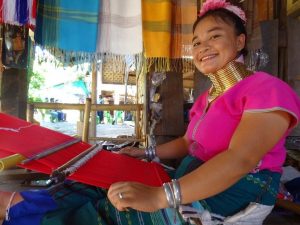 (weaver): “We are eager to receive tourists again after the COVID Pandemic. It’s great that more tourists want to try weaving. They say to me that it looks very easy, but after they tried themselves, they understand how precise you have to be while weaving. They are proud when they weave their own hairband, with some help from me and the other weavers. It makes me very happy if they tell me that they get more respect for the work we are doing.”
(weaver): “We are eager to receive tourists again after the COVID Pandemic. It’s great that more tourists want to try weaving. They say to me that it looks very easy, but after they tried themselves, they understand how precise you have to be while weaving. They are proud when they weave their own hairband, with some help from me and the other weavers. It makes me very happy if they tell me that they get more respect for the work we are doing.” 
Contact Information
Photo exhibition
Summary of the bachelor thesis titled: Impact of COVID-19 on Community-based Tourism Projects in Northern Thailand
Main findings
To give an impression of the findings of our field trip, we have organized a photo exhibition at numerous locations in The Netherlands. This way we want to create awareness to change the situation in Kayan villages.
Click on the photos for enlargements and descriptions.







